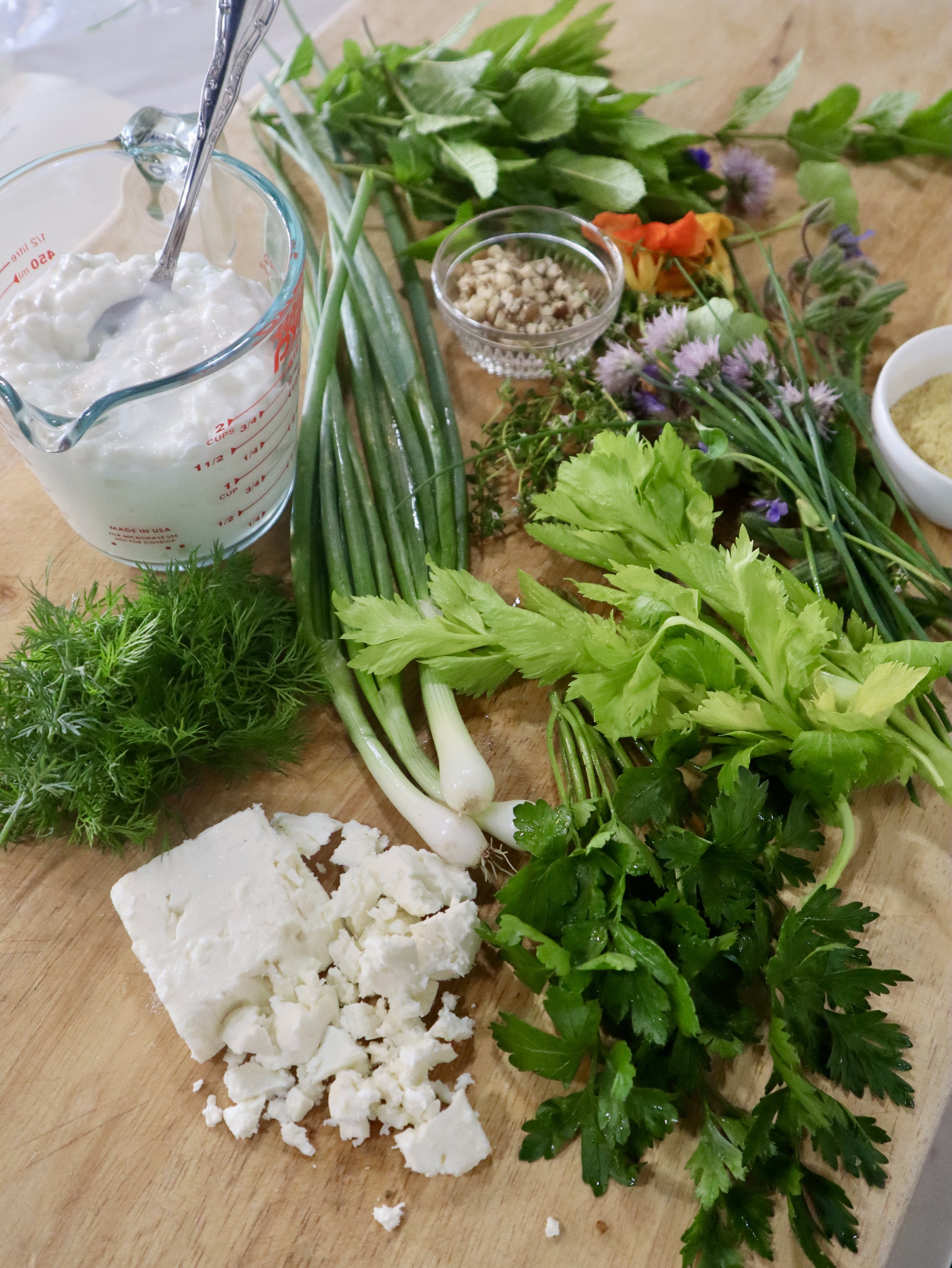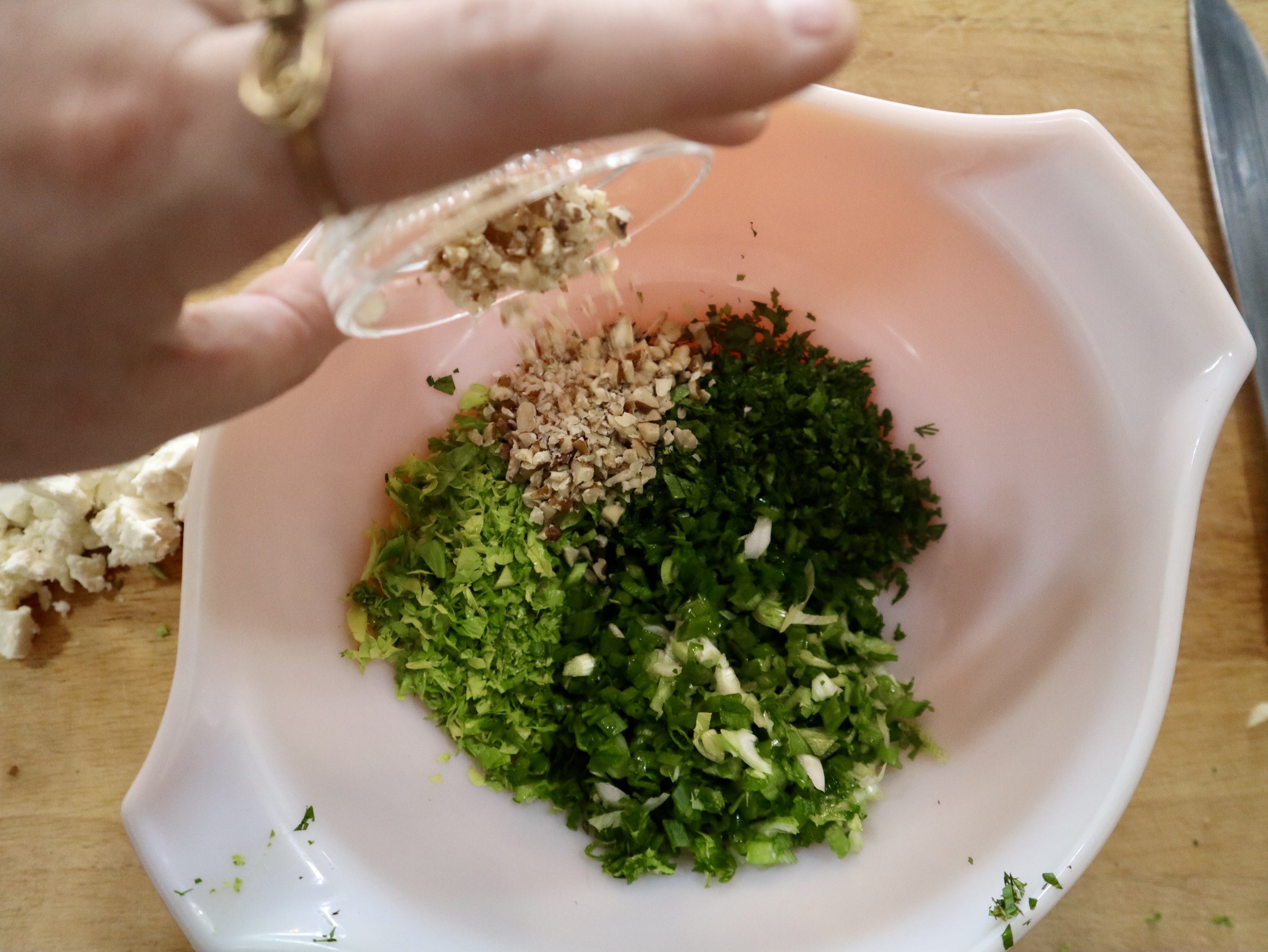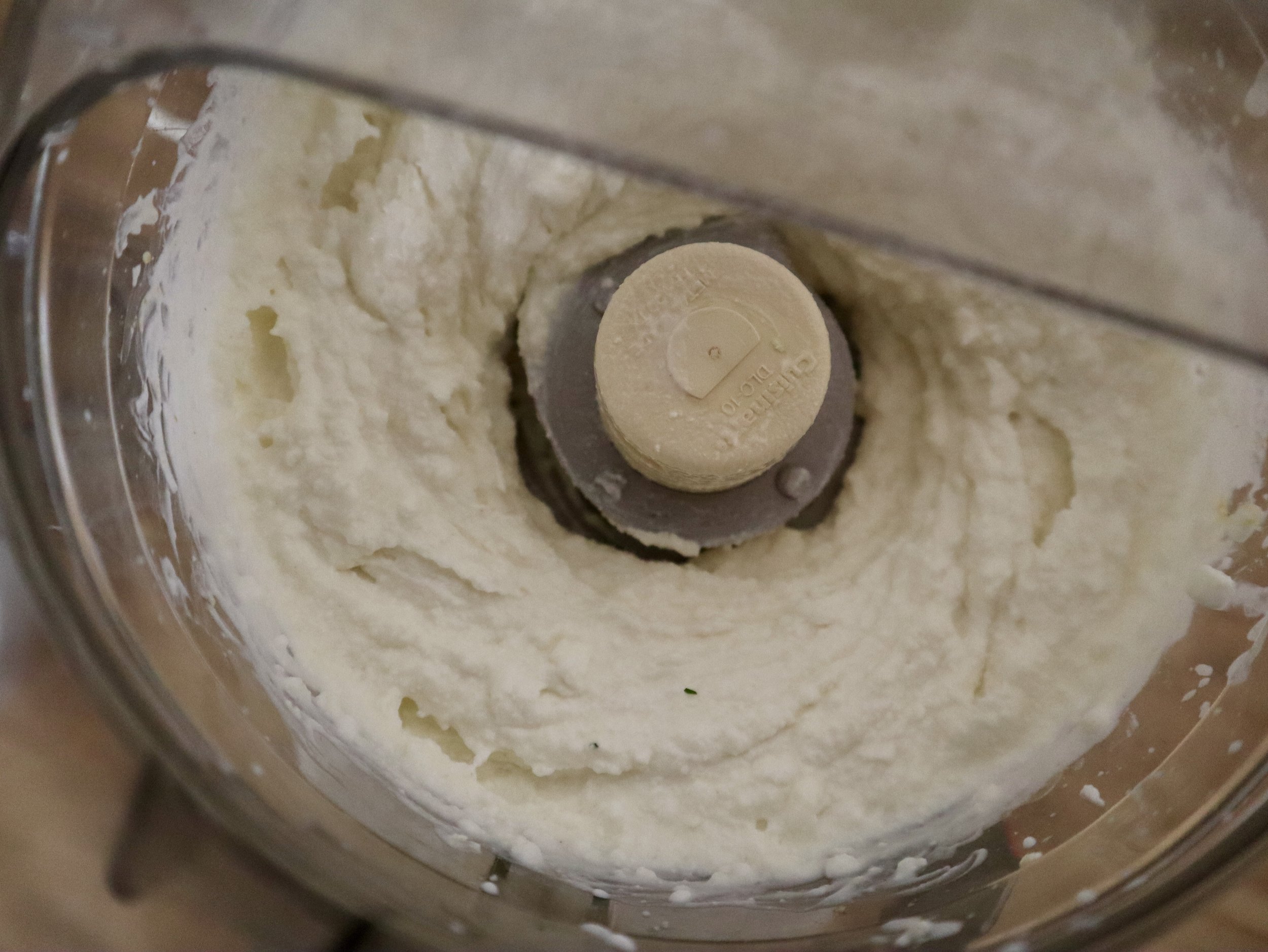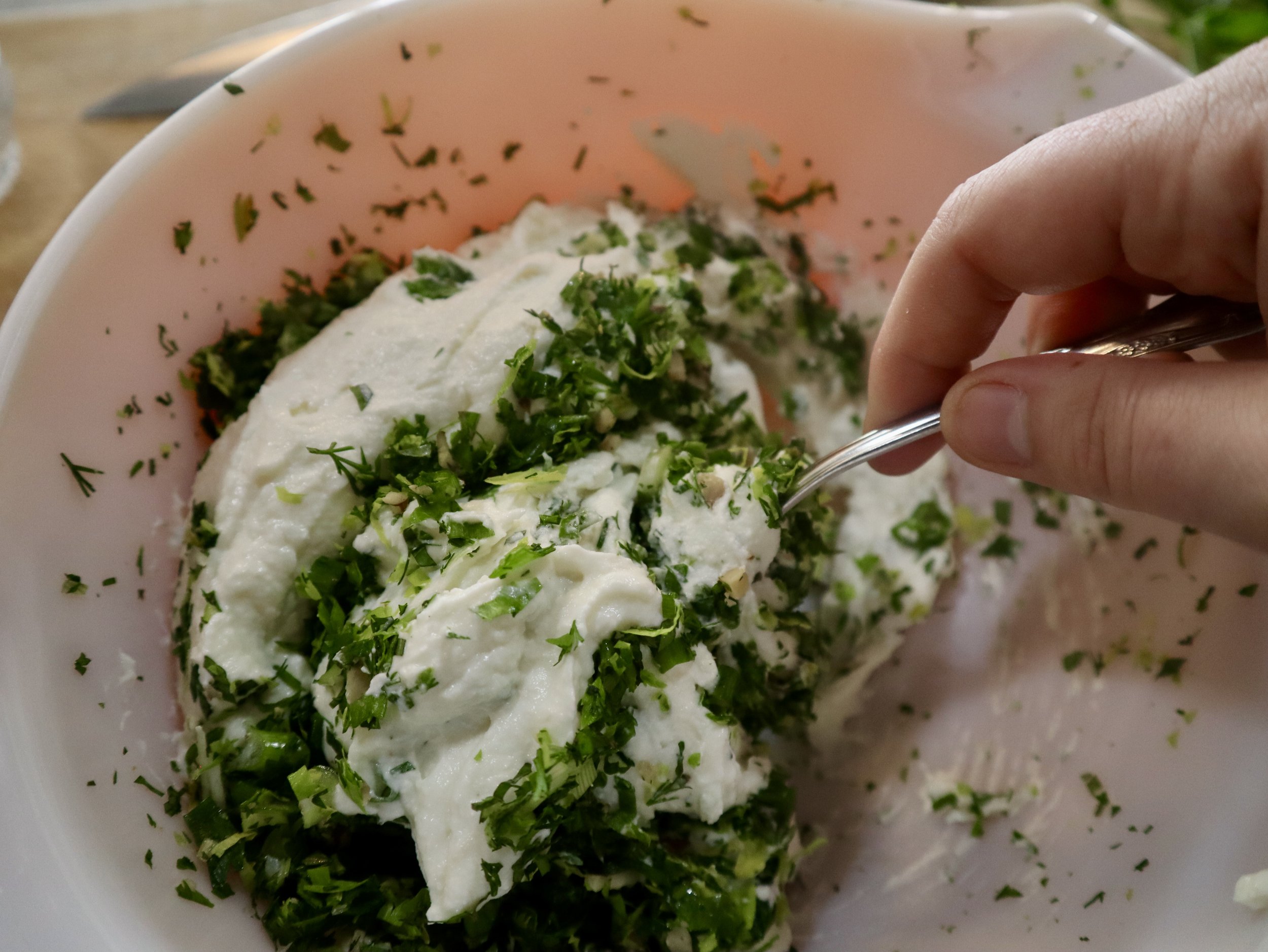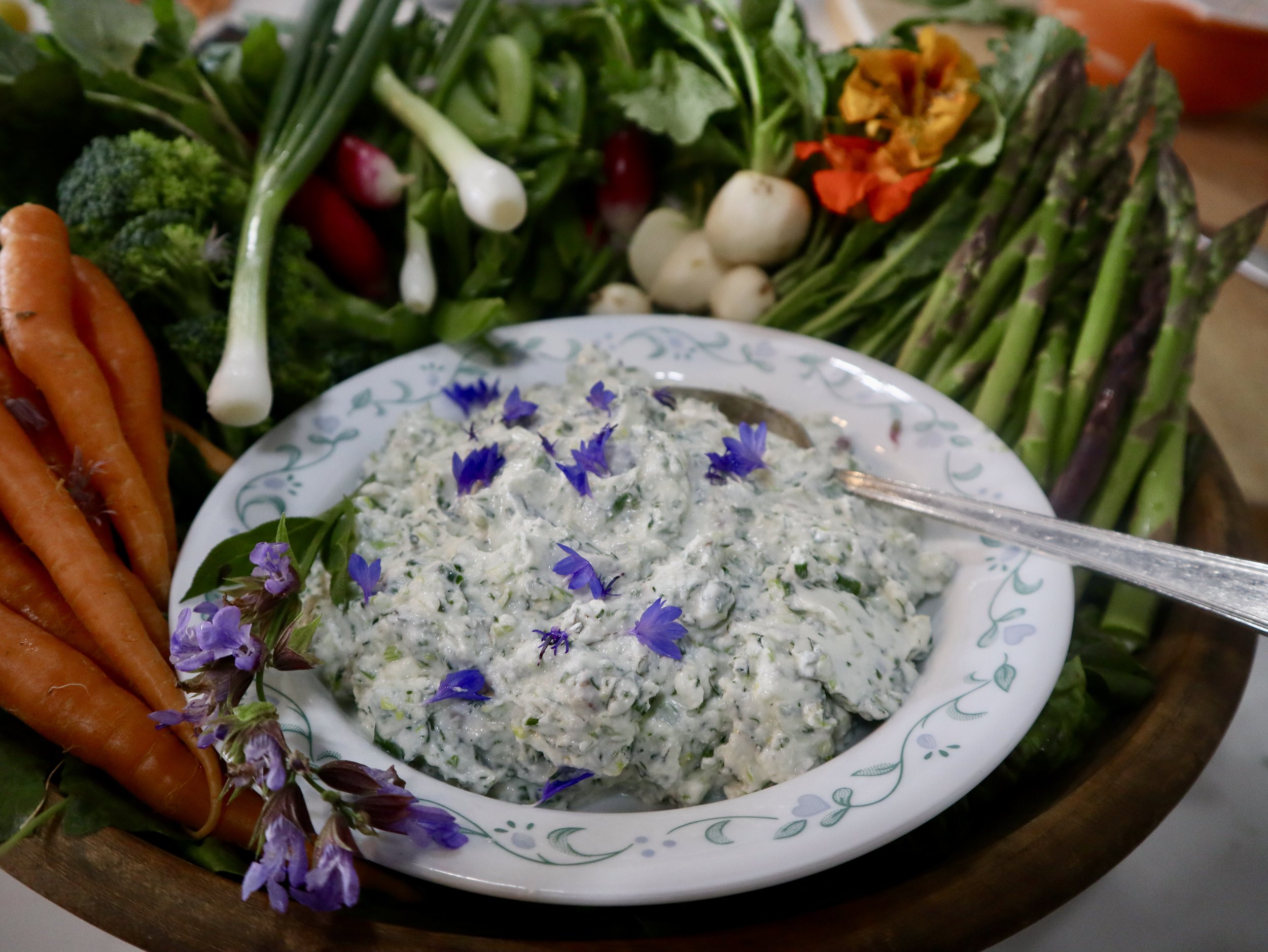Spreading Crudité Love
tips by Ouita Michel & Donna Hecker. photography by Talitha Schroeder
Chef Ouita says that crudité bowls don’t get enough love. Instead of a centerpiece for your next gathering, consider building a beautiful crudité arrangement full of young and tender vegetables from your garden or a local farmers market.
Start with the container –
Anything will work as long as it’s big enough to look bountiful and somewhat shallow so nothing gets buried. Try one of these:
An heirloom wooden salad or dough bowl.
A wooden wine box or old wooden crate.
A vintage tray or large platter.
A rustic basket.
Next prepare the bedding for your vegetables –
Line the container if necessary with a clean tea towel or other barrier before putting down lettuce leaves, etc.
This is a good use for your vintage linen tea towels, napkins, etc.
Big leaves of Swiss chard, Tuscan kale, collards, leaf lettuce, Savoy cabbage.
Small leaves like Bibb, curly endive, radicchio.
Prep your veggies –
Give everything a good swish and rinse in cool water.
Minimize trimming and peeling and leave things in their natural state as much as possible.
Parboil or blanch any sturdy vegetable that might need it – asparagus, baby potatoes, beans, broccoli, cauliflower, asparagus.
Choose garnishes –
Edible flowers, especially nasturtiums and herb blossoms; fresh herbs, microgreens, any baby veggies you may only have a handful of.
Radish roses, carrot spirals, scallion brushes are all fun, too.
Pickles and olives for a contrast of flavor and texture.
Visualize your platter –
Picture a contrast of colors, shapes, sizes and textures.
Lay everything out on a clean surface before assembling the platter.
Start with your sturdiest and/or most abundant vegetables and try to replicate how they appear in real life – masses of broccoli or cauliflower florets, carrots in a bunch, spears of asparagus all pointing the same way.
Use sphere-shaped veggies like radishes and cherry tomatoes to fill in the gaps.
Finally, a little something pretty to scatter over top –
Edible flower petals, fresh herbs, a sprinkle of artisanal salt.
And a good dip –
A couple different kinds are nice.
If one is pourable, present it in a pretty little pitcher instead of a bowl.
Consider serving thicker dips in hollowed out vegetable containers – a whole pepper with the base trimmed slightly; a small cabbage, a steamed artichoke with the center leaves and choke removed.
No dip? no problem! Extra-virgin olive oil for drizzling and fresh lemon wedges for squeezing are perfect with tender spring and summer crudité.
For our crudité bowl, we chose this Feta and Cottage Cheese Dip with Leeks, Celery & Walnuts. (Shiraz bi-Buqal)
It’s similar to the “schmierkase” that Elizabeth Kremer used to make for her husband John, and based on a medieval recipe that Chef Ouita makes for the yearly Epiphany Dinner at Midway Christian Church.
We think it’s a lovely dip for a springtime crudité platter, inspired by the relish bowls on every table in the Shaker Trustees’ Office dining room.
Ingredients:
2 tablespoons fresh mint leaves
¼ cup fresh dill fronds
¼ cup flat leaf or curly parsley
½ cup celery leaves
1 leek, white part only, or 3 green onions
1 teaspoon kosher salt
2 teaspoons dry mustard
1 tablespoon walnuts
1 ½ cups cottage cheese
½ cup Feta cheese, coarsely crumbled
Method:
1. Mince all the herbs, onion, celery and walnuts.
2. Place the cottage cheese, feta cheese, salt, and mustard into a food processor and puree until smooth.
3. Fold in the herbs, onion, celery, and walnuts. Check for seasoning and serve as a dip.
Related Content
A Life of Simplicity and Excellence
Holly Hill founder Ouita Michel wrote the foreword for Simplicity and Excellence: from Beaten Biscuits to Shaker Lemon Pie, authored by Deirdre A. Skaggs and Elizabeth Kremer's daughter, Evalina Kremer Settle. It's an intimate look at the life and work of a remarkable 20th century woman in the culinary world.
© 2024, Holly Hill Inn/Ilex Summit, LLC and its affiliates, All Rights Reserved





